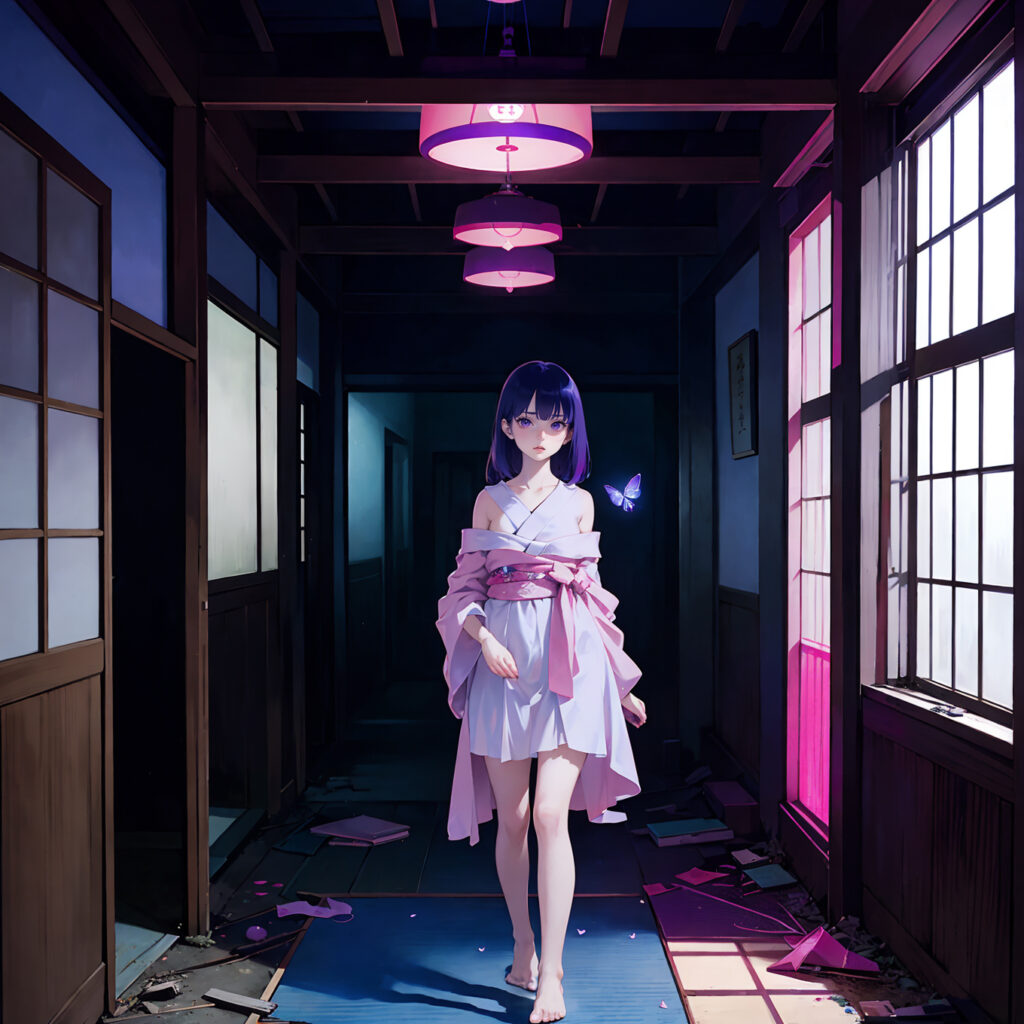
Underworld Illusions 27
House of Anxiety

Less Than Art by Kazuya Ueda

Underworld Illusions 27
House of Anxiety
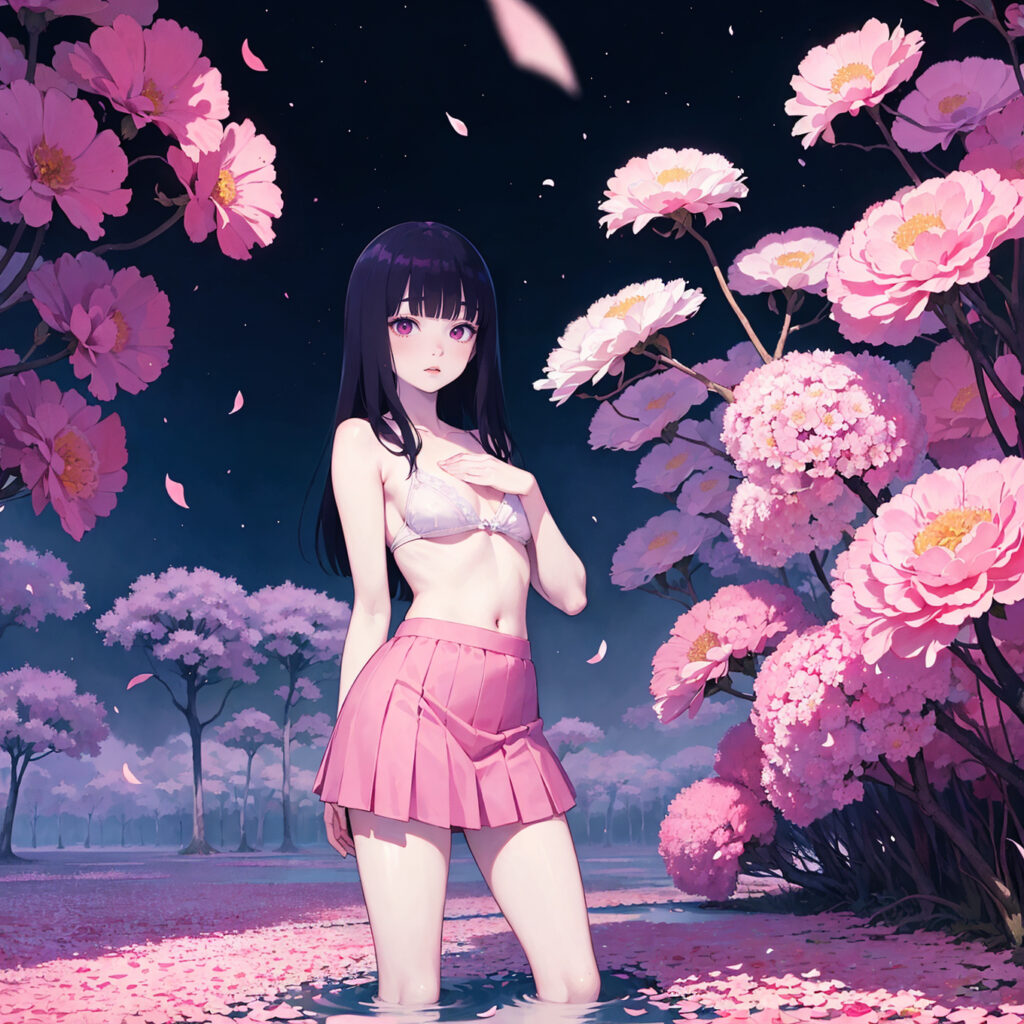
Underworld Illusions 26
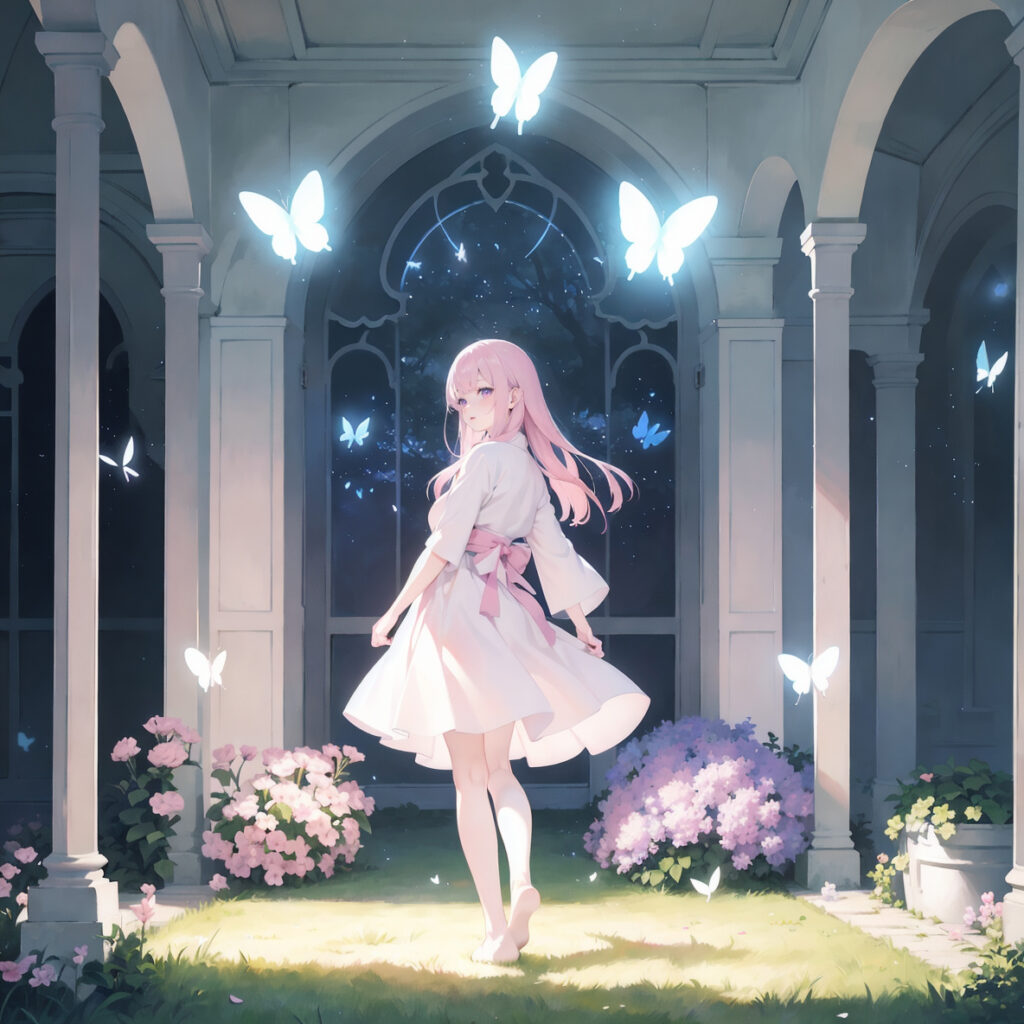
Another World: Underworld Illusions 25
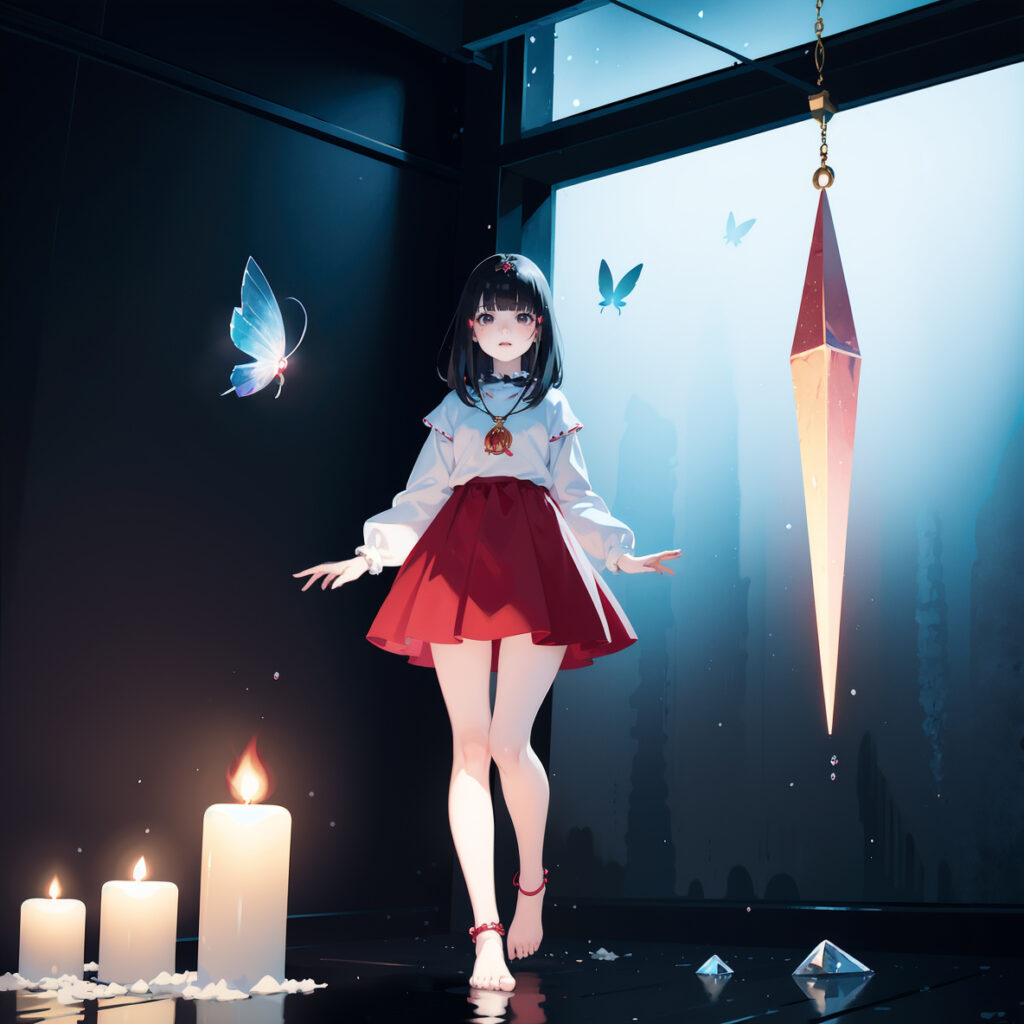
Phantom of Poseidia 3
Anxiety about the collapse of Atlantis

In a kickboxing gym in the late afternoon
キックボクシングジムでお世話になっており、私の尊敬する彩丘亜紗子トレーナー(元ムエタイ世界二冠王者)から「生成AI画像の女の子かわいいですね」と言っていただき、感激している。私の生成画像AIは、自分としてはまあまあ自信はあるものの、身近にいる人から褒められることはあまりない。なので、これから自信を持って、彩丘トレーナー好みの画像を更に生成していきたい次第。
ジムを初めて訪れた際に、案内いただいたのが彩丘トレーナーだった。
「格闘技の経験は?」と尋ねられ、私は「ないです。プロレスとか見るだけです」と答えた。
「好きな選手とかは?」
「ええと、昔の選手なのですが、佐山サトルとか…」
私が入会したい旨を伝えると、彩丘トレーナーは私に、キックの神様・藤原敏夫氏との写真や佐山サトル講演会のスライド写真などを見せてくださった。
私は佐山サトルを天才だと思っており、その思想にも惹かれていることを彩丘トレーナーに伝えると、ニコッと笑顔を見せてくれた。
彩丘トレーナーのインスタをフォローするのはやや憚られた。なぜなら、私の生成画像世界は、どう見てもニーチェ的で勇壮な格闘系とは言えず、どちらかといえば江戸川乱歩的な「妄想系で不健康な世界」かなと思ったからである。
しかし、私のそのような思いはどうやら杞憂だった。
インスタフォロー後に、トレーナーは私に「生成画像いいですね」と感想を言ってくださったので、私は密かに嬉しかった。
キックボクシングは始めたばかりで、まだ見様見真似だが、続けている。
自身の生成画像も、「こんなことやり続けて意味あるのかな」と、虚無感に襲われることもあったが、チャンピオンのお墨付きがあるのだから、もっと大きな自信を持って「かわいい女の子」画像を生成していこうと思ったのだった。
そんなことを考えながら、サンドバックを蹴った。
I am thrilled to hear from my respected trainer Asako Ayaoka (former two-time Muay Thai world champion), who teaches me at a kickboxing gym, that “the girl in the generated AI image you are creating is cute,” she said. Although I am fairly confident about my generated image AI, I do not often receive compliments from people close to me. So, I would like to generate more images that trainer Ayaoka likes with confidence from now on.
When I visited the gym for the first time, I was guided by trainer Ayaoka.
He asked me, “Do you have any experience in martial arts? I answered, “No. I just watch wrestling and stuff like that. ”
”Do you have a favorite fighter?”
I replied, “Well, I like Satoru Sayama, although he is a bit older…”
When I told her I wanted to join, trainer Ayaoka showed me pictures of her with kicking god Toshio Fujiwara and slides of Satoru Sayama lectures.
When I told Ayaoka that I thought Satoru Sayama was a genius and that I was attracted to his philosophy, she smiled at me.
I was somewhat hesitant to follow the Instagram of trainer Ayaoka. This is because I thought that the world of images I generated was not a Nietzschean, heroic, fighting world, but rather a “delusional, unhealthy world” in the style of Edogawa Rampo.
However, my thoughts were apparently unfounded.
After I followed her Instagram, the trainer told me what she thought of me, saying, “I like the generated images,” which secretly made me happy.
I just started kickboxing and am still learning as I go, but I keep at it.
I sometimes felt a sense of emptiness about my own generated images, wondering if there was any point in continuing to do such things, but I decided to generate “cute girl” images with greater confidence now that I had a champion’s endorsement.
With these thoughts in mind, I kicked the sandbag.
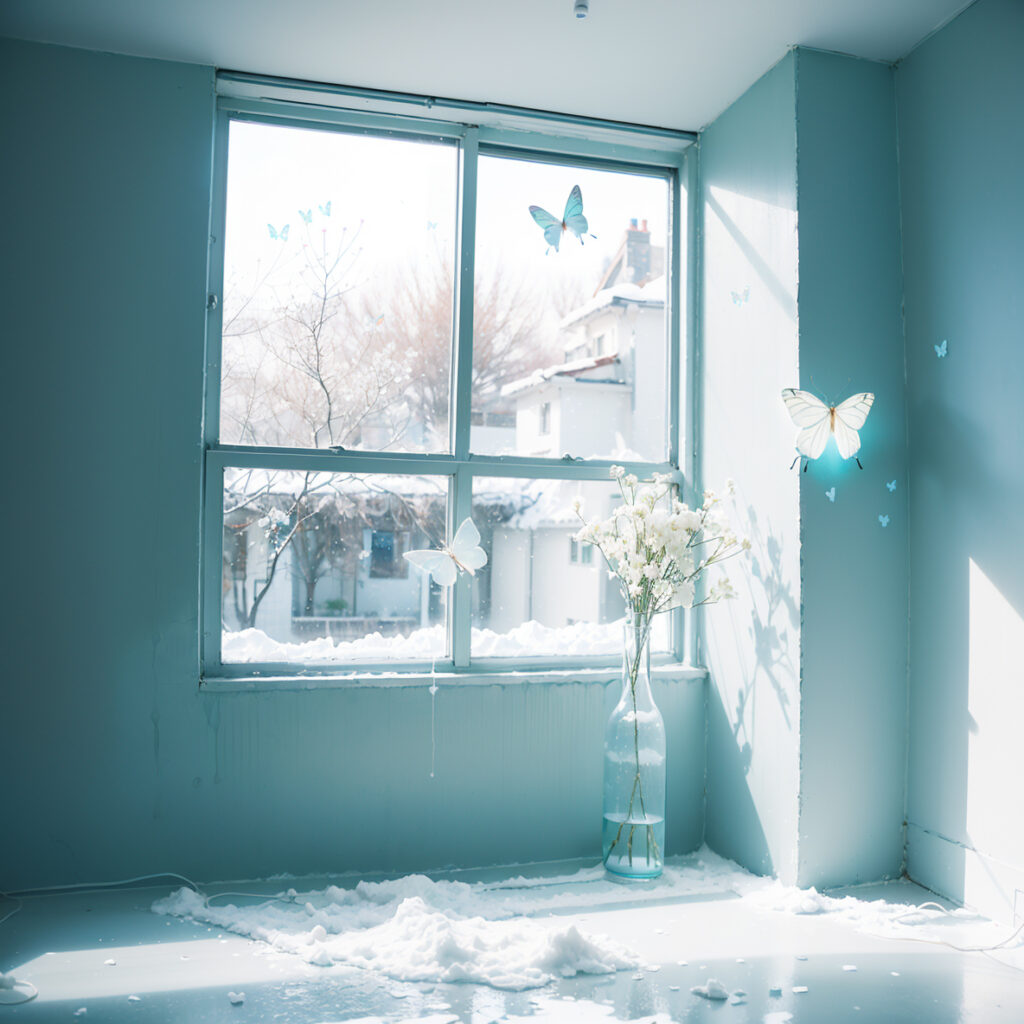
Winter room, snow room
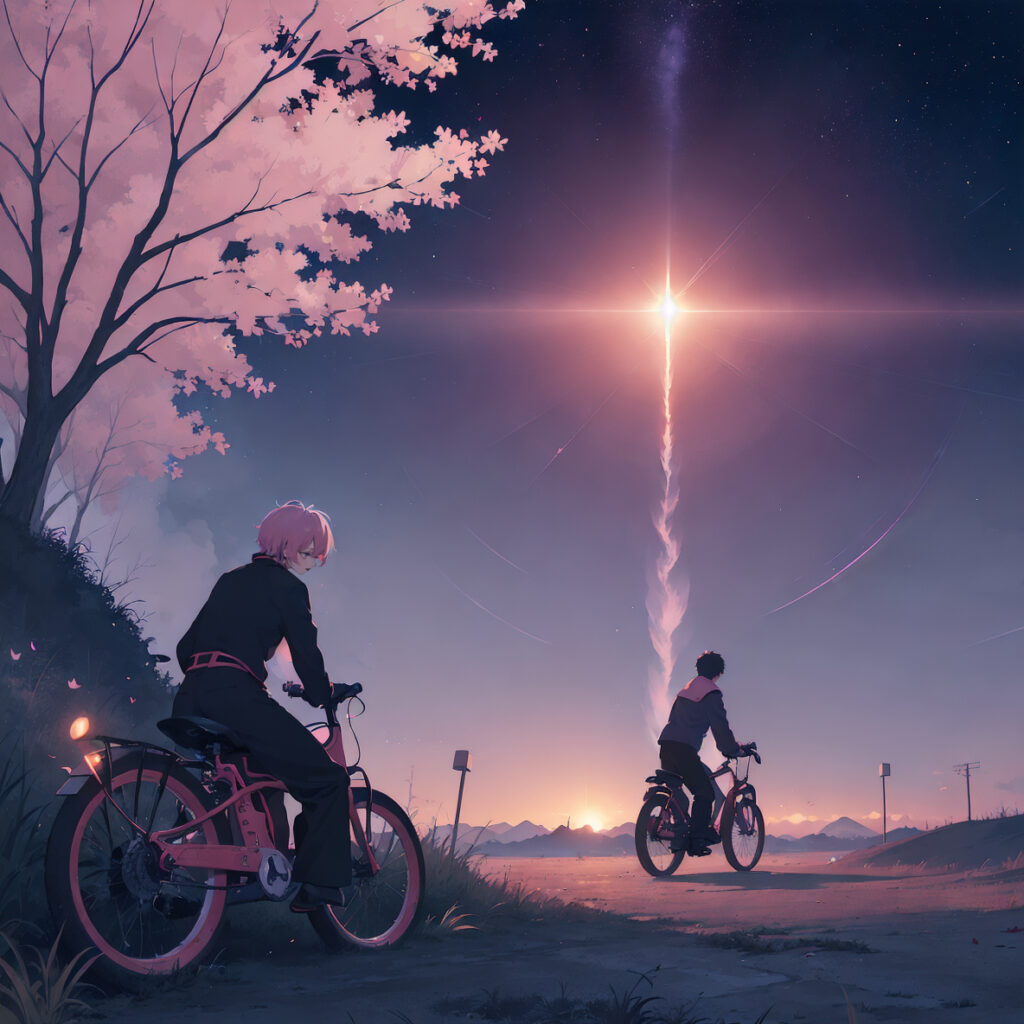
Crash of launched satellite 18
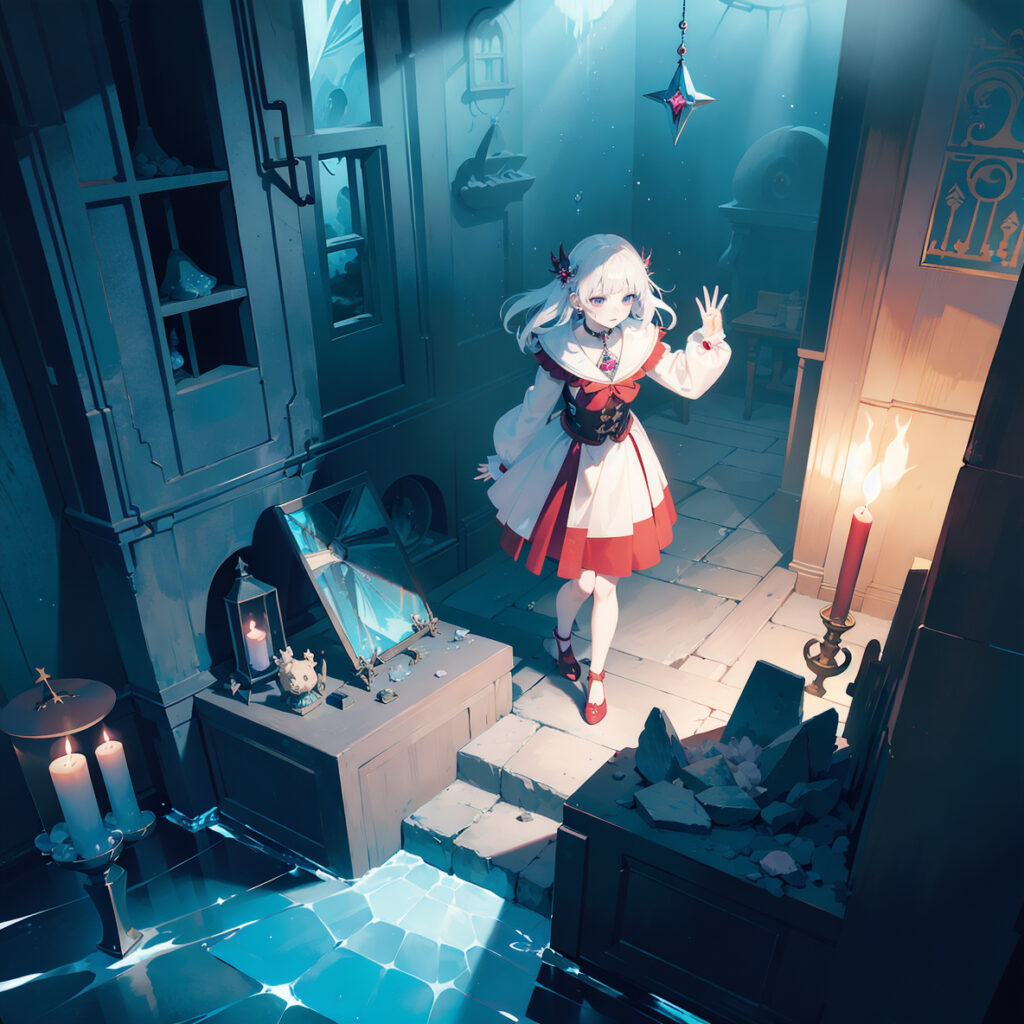
Phantom of Poseidia 2
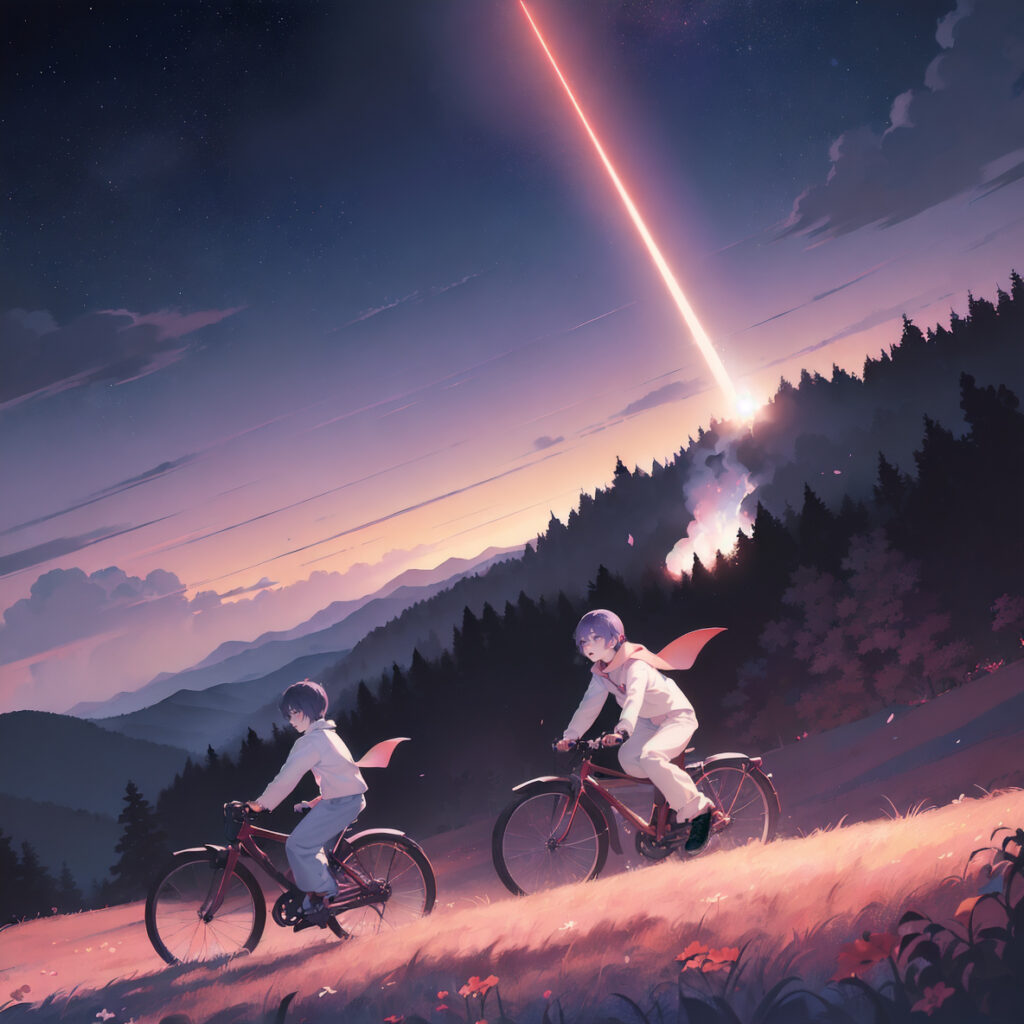
Joking around with friends at nightfall, biking home from an abandoned mountains with ruins
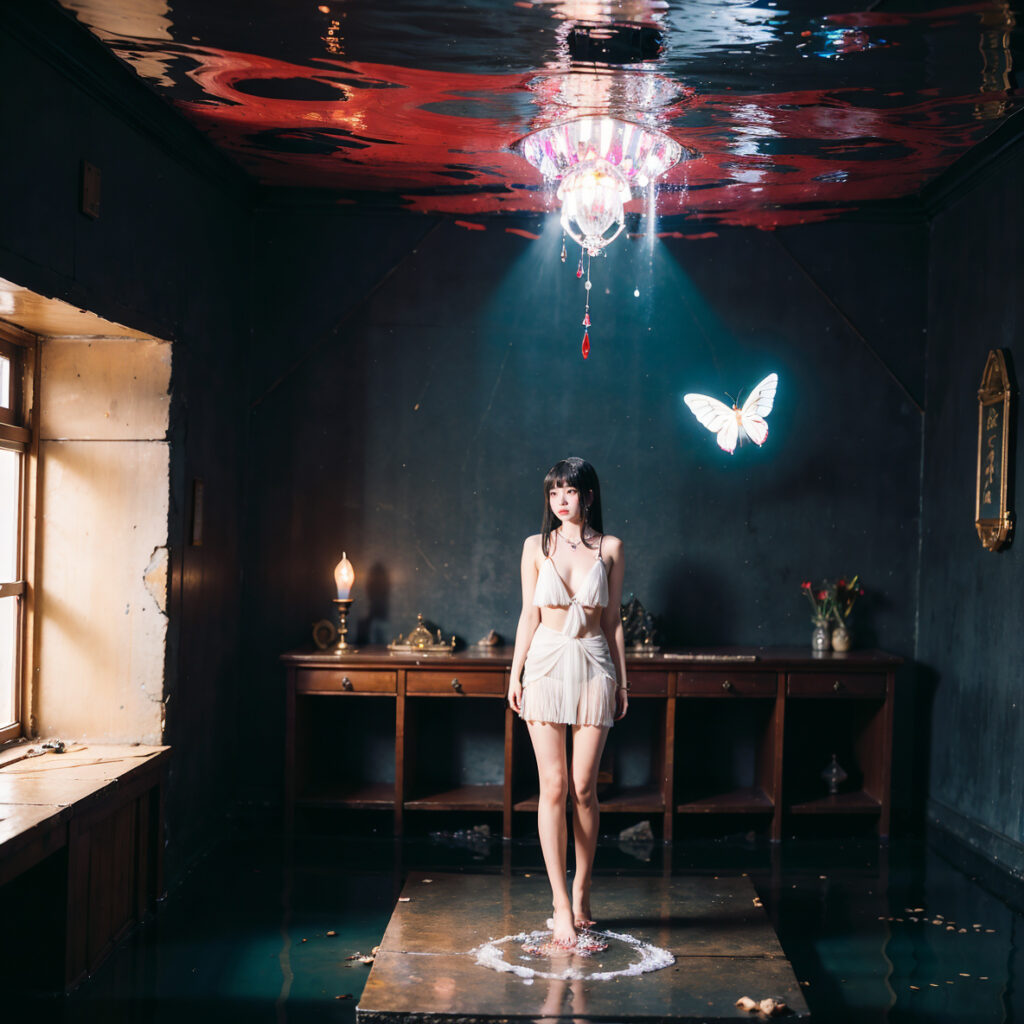
Phantom of Poseidia